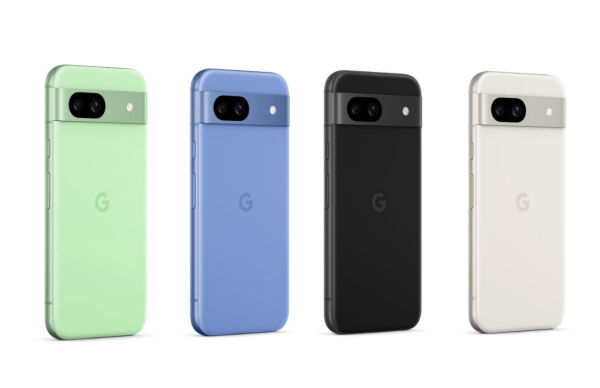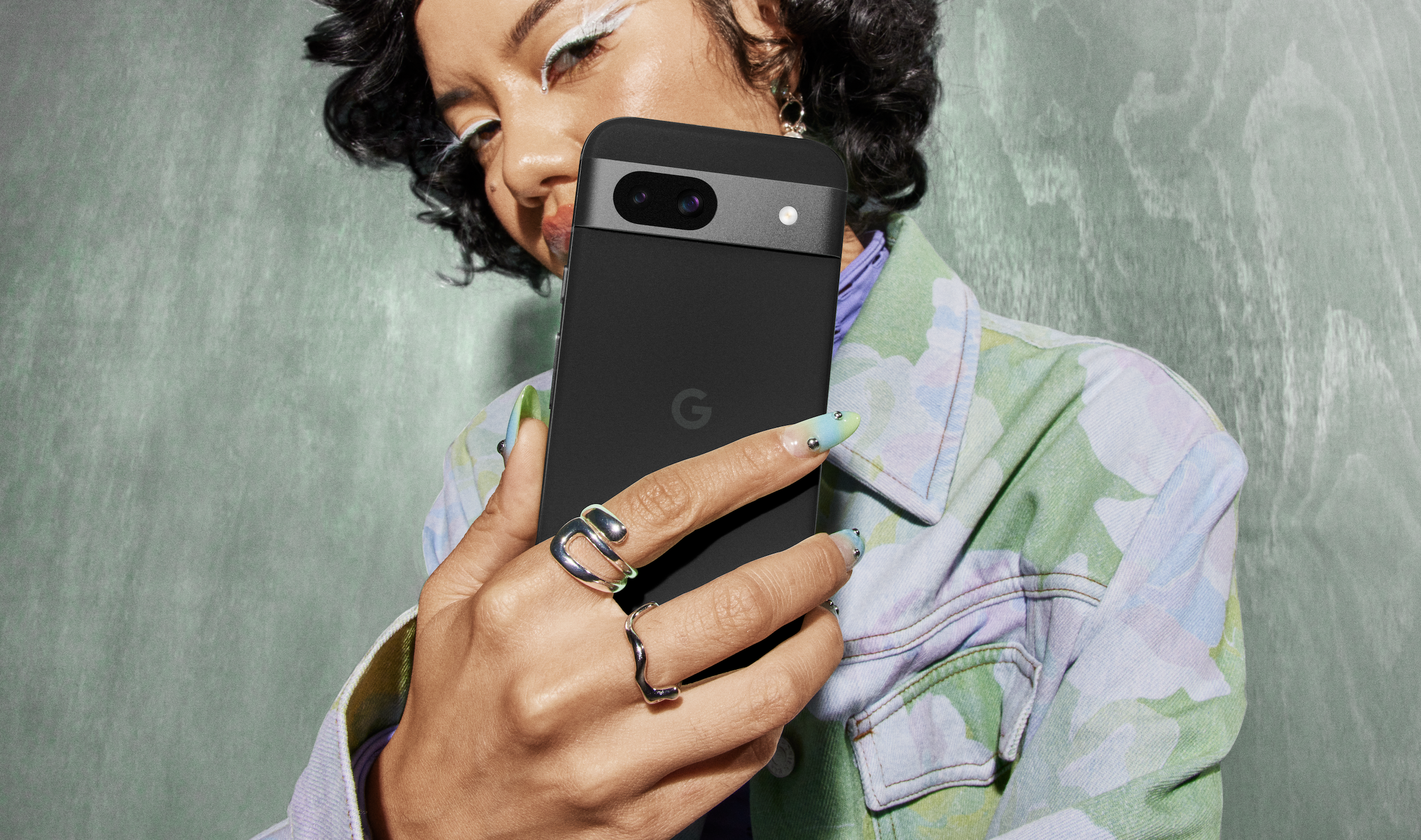After many rumors and much teasing, the Google Pixel 8a has been revealed, and it’s a budget phone with a host of generative AI abilities.
The Pixel 8a takes many of its design cues from the Google Pixel 8 and its direct predecessor, the Google Pixel 7a, keeping the distinctive rectangular camera bar of both phones and the 6.1-inch display size of the latter – there are some changes though.
The display is a 2400 x 1400 resolution Acuta panel, meaning it gets up to 40% brighter than the Pixel 7a’s screen and comes with a 120Hz refresh rate as opposed to 90Hz. The rear cameras comprise a 64-megapixel main sensor with an 80-degree field of view and the ability to capture video at 30 frames per second and 60 fps in a 4K resolution, while the ultrawide camera gets a bump up to 13MP and has a 120-degree field of view; around the front there’s a 13MP camera.
There’s a fresh suite of colors for the more affordable Pixel, with the 8a coming in Aloe (think a light pastel green), Bay (light blue), Obsidian (black) and Porcelain (white) colors.

While the Pixel 7a only offered a model with 128GB of storage, Google has decided the Pixel 8a would benefit from the option of 256GB of onboard storage as well. 18W wireless charging support is present, as is the option for wireless Qi charging. And the battery has got a minor bump as well, up from 4,385mAh to 4,492mAh – expect decent battery life, but nothing to write home about.
I say that because the Pixel 8a comes with Google’s Tensor G3 chip, the same processor as in the Pixel 8 and Pixel 8 Pro, which not only means a decent slug of power but an AI-centric processing pipeline, enabling the new phone to offer the same suite of AI and generative AI features as its bigger stablemates.
Naturally, Best Take, which enables users to include the best facial expressions for everyone in a group photo, is present, as is the generative AI-based Magic Editor, which enables photos to be re-cropped, with the smart tech generating imagery to fill in any gaps or to basically recompose a photo completely.
The less headline-grabbing smart camera features have also filtered down to the Pixel 8a, including Audio Magic Eraser, which can smartly can remove background noise from videos, Real Tone in video, which ensures skin tones are captured accurately, and Guided Frame mode, to help people with visual impairments take a neatly composed photo.

The generative AI also comes into play elsewhere, with the Pixel 8a having the slick and powerful Circle to Search feature, which lets you press and hold the Android home button, then circle an object or subject in a photo or on screen, and have the AI try to identify what’s been circled and serve up relevant search results.
The Pixel 8a gets other tools like Call Assist, which can wait in a phone queue for you and alert you when it’s your turn to talk to a customer service representative, and the Gemini AI assistant, which can do all manner of tasks, like summarize emails and add images to things from just a command; bear in mind that its availability will be dependent on languages and regions. Smart safety measures are also thrown in for good measure, with tools like car-crash detection and an automated safety check feature aiming to keep users safe or get quick access to aid if they are not.
In short, the Google Pixel 8a is basically a cheaper way to get access to a whole load of Google’s latest smart and generative AI-based features. At $499 / £449 / AU$849, it keeps the same price as its predecessor, but is AU$100 more expensive in Australia. However, it comes with more powerful innards and a new dose of smart features – and there’s now seven years of software updates, a first for the Pixel a-series.
Pre-orders are live today (May 7) and the Google Pixel 8a will hit shelves on May 14. We suggest waiting for TechRadar’s review before taking the plunge on the new Pixel; if you’re very keen on buying a phone today, then check out our best phones list and best cheap phones list for a budget option.




















+ There are no comments
Add yours